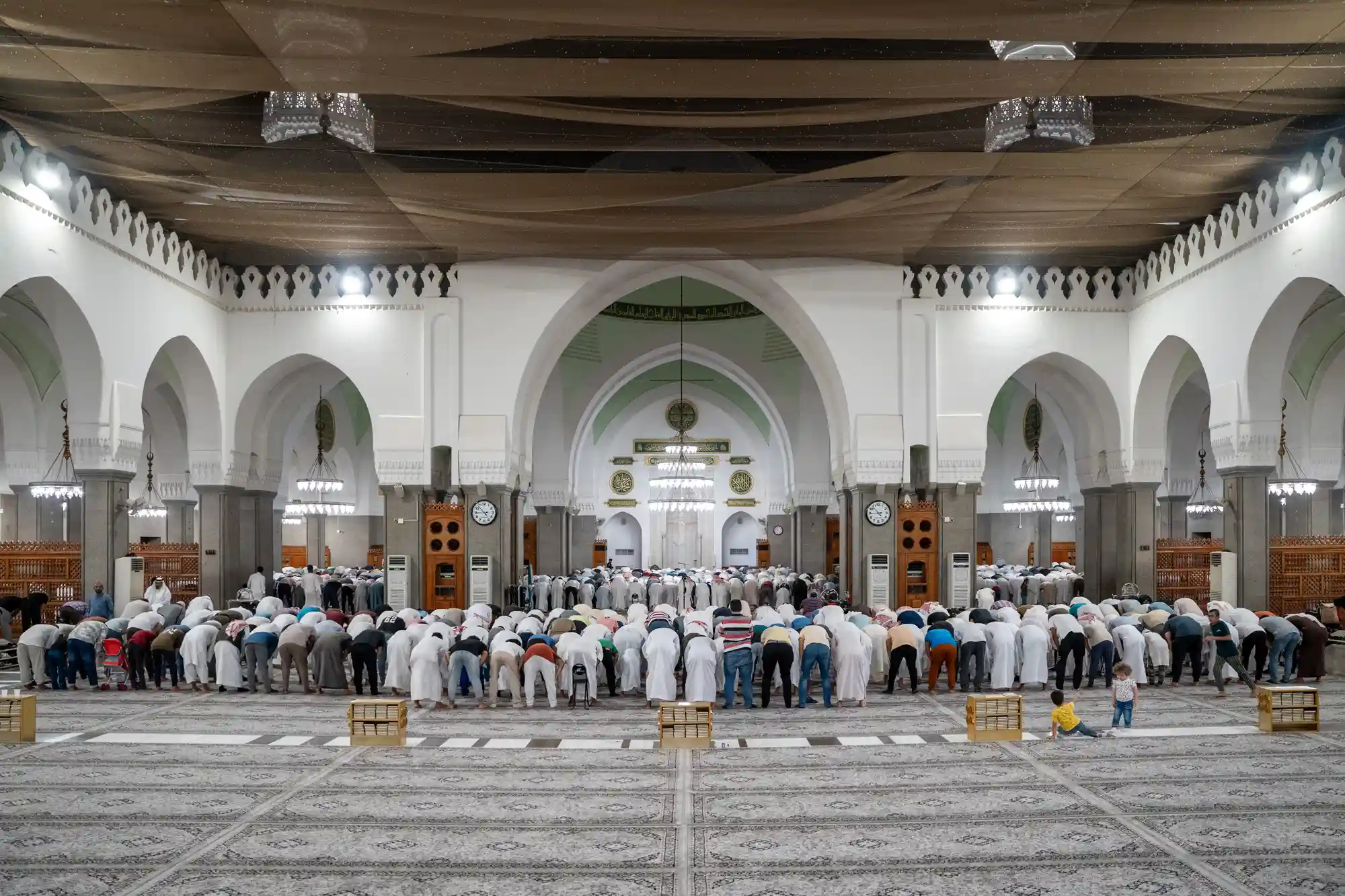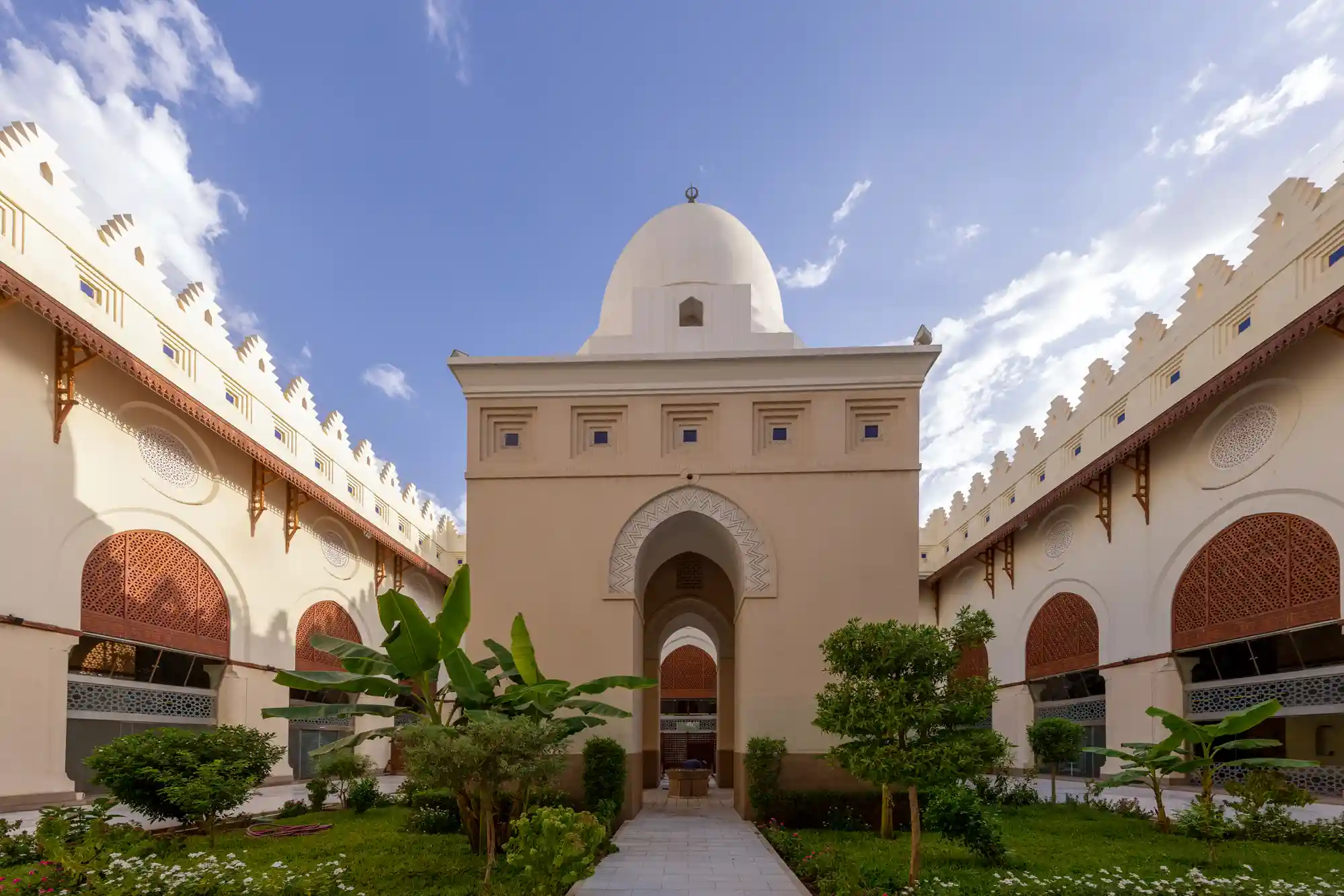Masjid Al-Qiblatain was named because it was where the Prophet prayed when new Quranic revelations from Allah instructed Prophet Muhammad (peace be upon him) to change the qibla from Bayt al-Muqaddas to Al Kaaba Al Musharraf: {We have certainly seen the turning of your face, [O Muhammad], toward the heaven, and We will surely turn you to a qiblah with which you will be pleased. So, turn your face toward Al-Masjid Al-Haram} [Al-Baqarah:144]. Previously, the Prophet (PBUH) prayed in the direction of Bayt al-Muqaddas for nine months, and it was said ten months after his Hijra to Medina. This mosque was built during the Prophet (PBUH) era, and several renovations were done until it was rebuilt, expanded, and adapted during the era of the Custodian of the Two Holy Mosques, King Fahd bin Abdul Aziz, may God have mercy on him, in 1408 AH / 1987 CE.
Historical Significance:
The mosque is located northwest of Madinah, near Al-Aqiq Valley. It was known as Bani Salima Mosque because it is located in their quarters. Bani Salima is a subtribe of the helpers. (ansar). Later it was renamed the Qiblatain Mosque because the Prophet(ﷺ) came to Bani Salima neighborhood and led the local residents in prayer. While he was leading his companions in zuhr prayer, he received revelation commanding him to turn towards the Kaaba. In the first two rak'as, he was facing Jerusalem, and in the last two rak'as he turned towards the Kabbah. Hence, this mosque becomes a monument that bears witness to one of the most important events in the history of Islam.
Development and Saudi Care for the Mosque:
The mosque was built with mud bricks, palm fronds, and palm trunks. It was renewed by Omar ibn Abdulaziz in 87 AH, and was repaired several times afterwards, the last of which in 950 AH. Then it was neglected until its restoration by King Abdulaziz Al Saud.
During the reign of King Abdulaziz, it was renewed and a minaret and a wall were built. After this expansion, it had an area of 425 square meters. Then, King Fahd ibn Abdulaziz ordered it to be demolished, rebuilt and expanded. So, the mosque was expanded to 3,920 square meters and re-planned. During the reign of King Salman ibn Abdulaziz, Al Madinah Region Development Authority has implemented a huge project to improve the mosque, including increasing its capacity to accommodate a larger number of worshipers and visitors, facilitating access to visitors, ensuring their safety, establishing a cultural center, an exhibition building and a shopping center, creating more green spaces and putting up informative and interactive sings to highlight the mosque history.
Architectural Style:
The mosque is characterized by its bright white color and Islamic architectural design. It has two domes and two minarets. A series of arches were erected in the prayer hall which can accommodate 2,000 worshippers. A 400 Square meters arcade serves as women's prayer area. The decorative copper chandeliers add a traditional, aesthetic touch. The mosque courtyard is planted with palm trees.


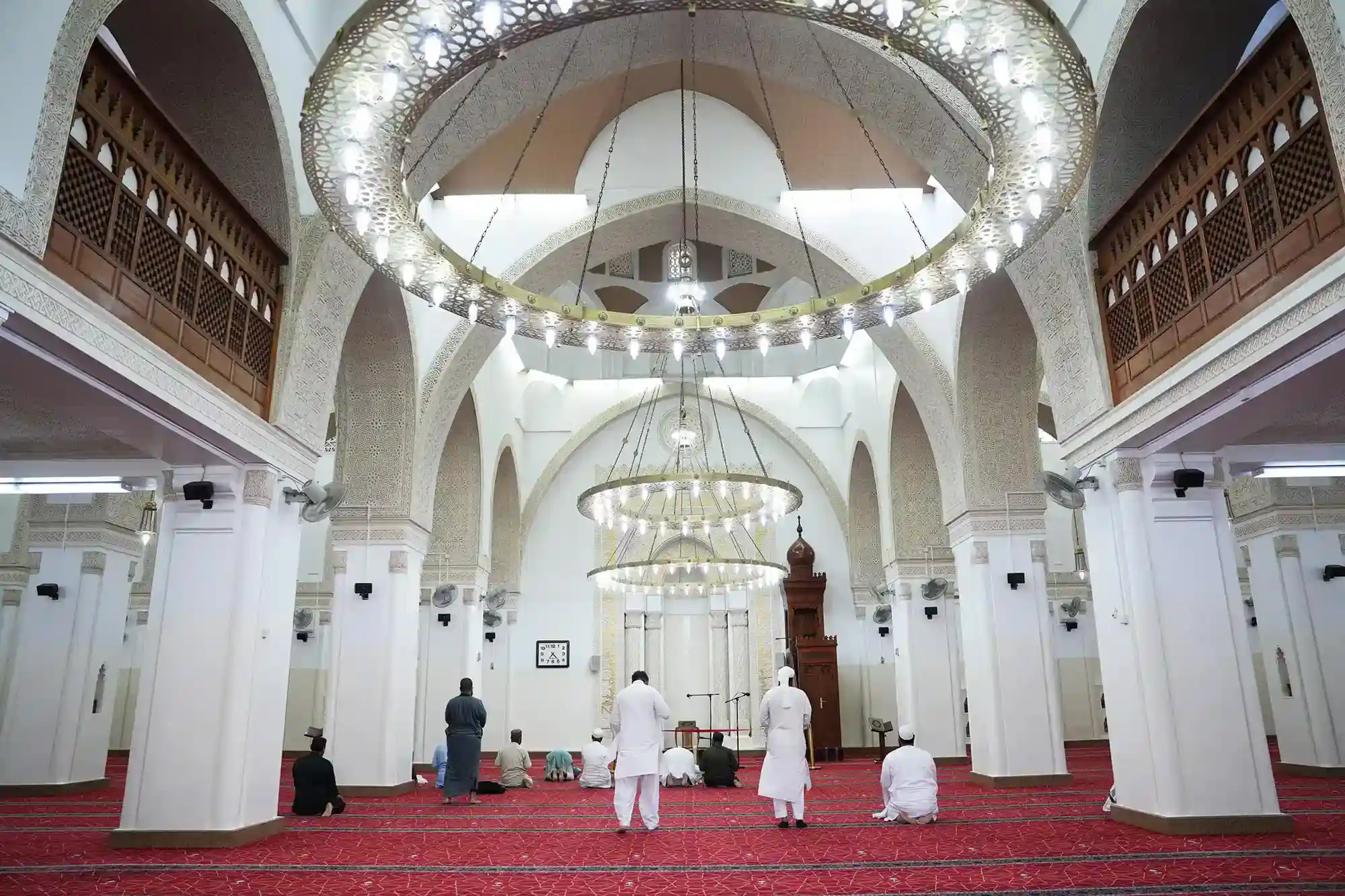
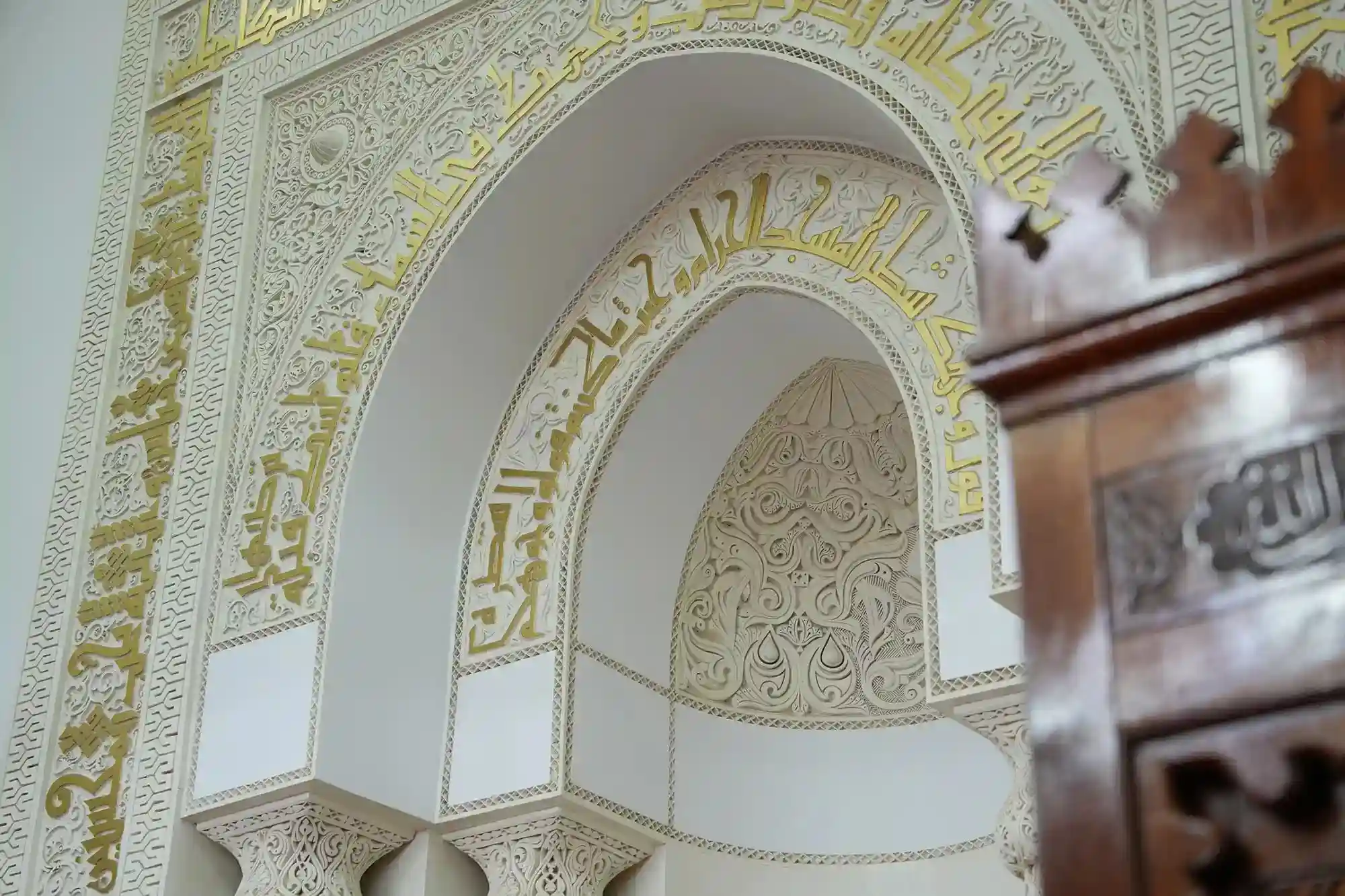
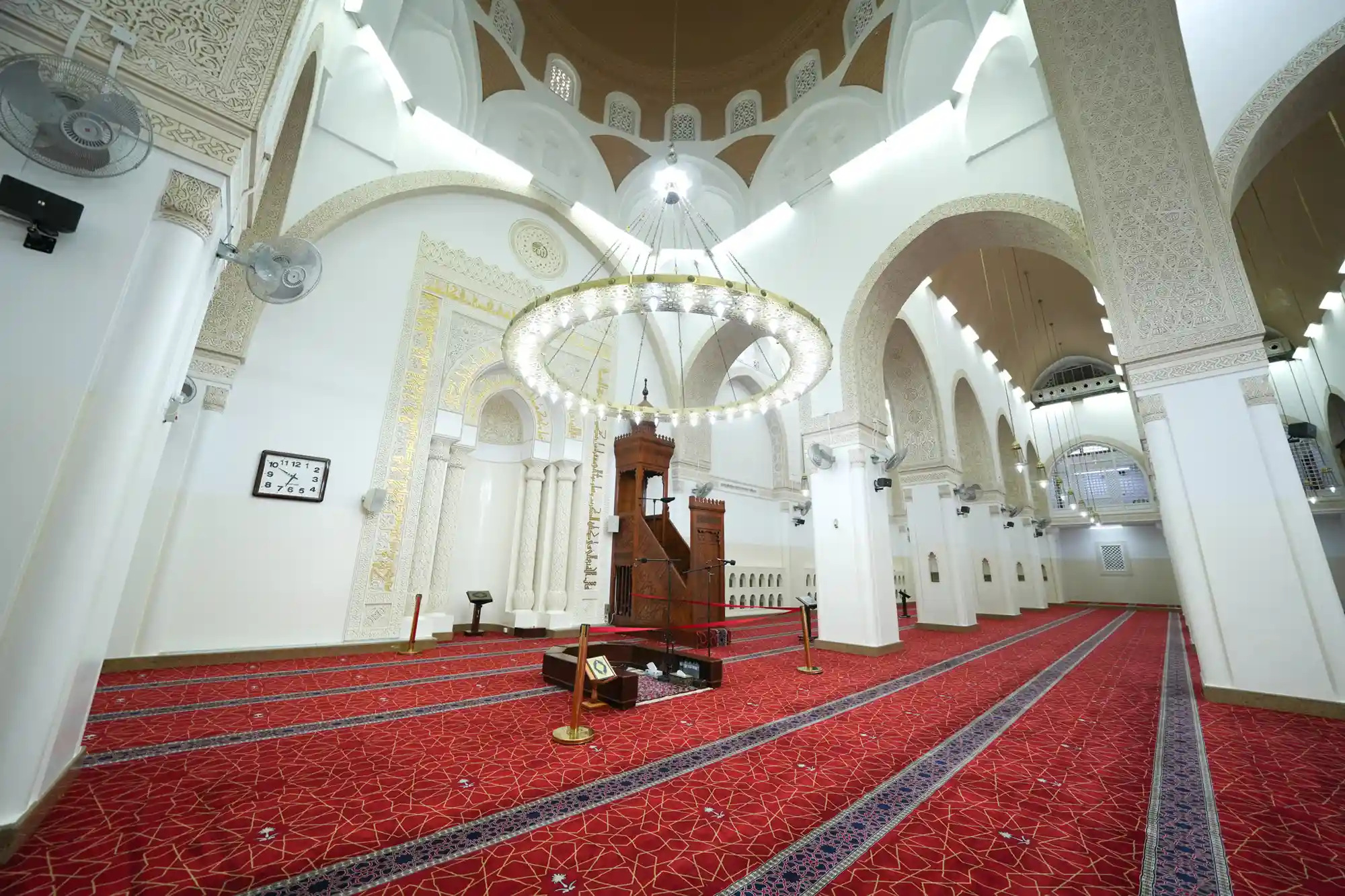
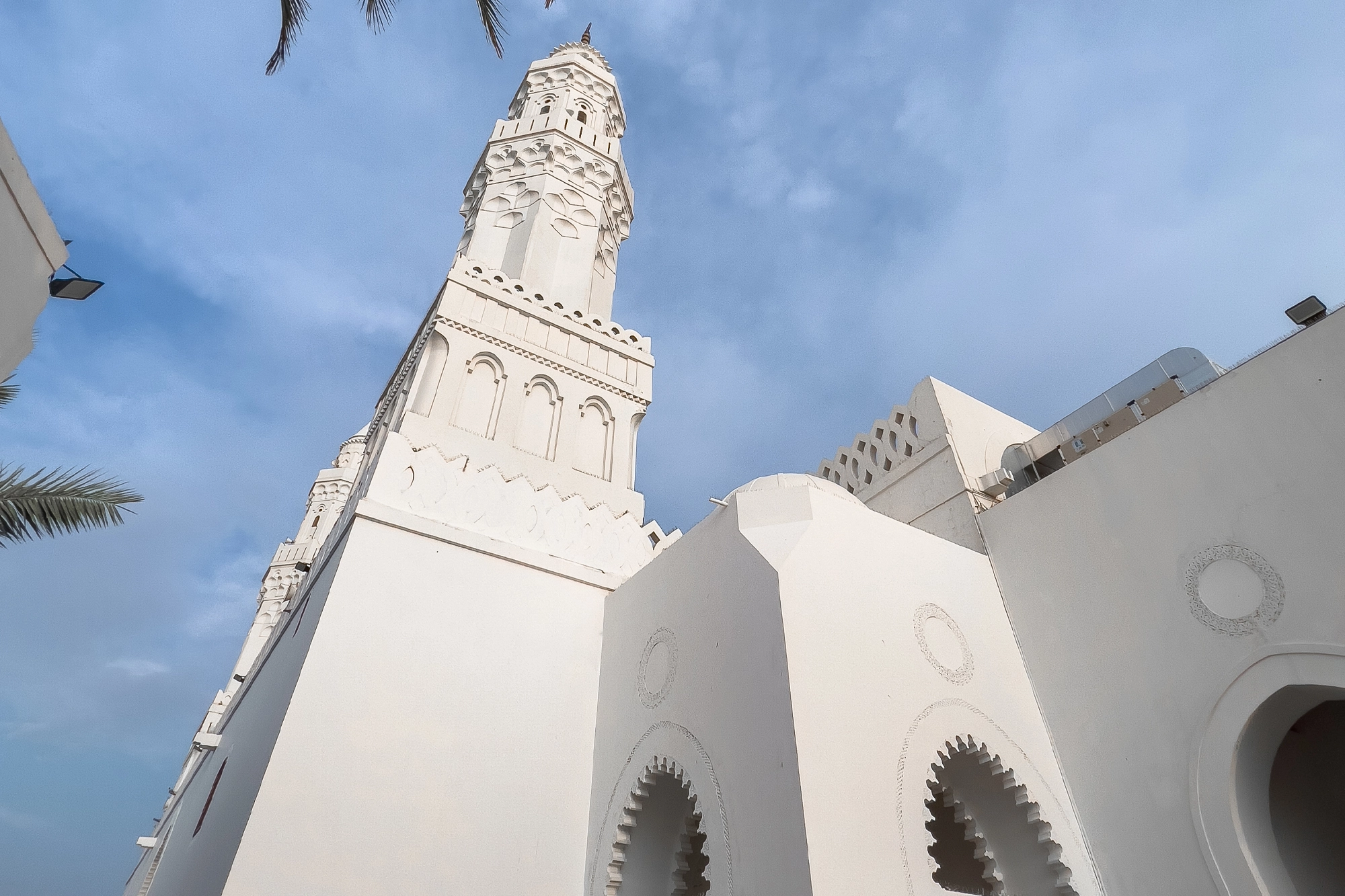
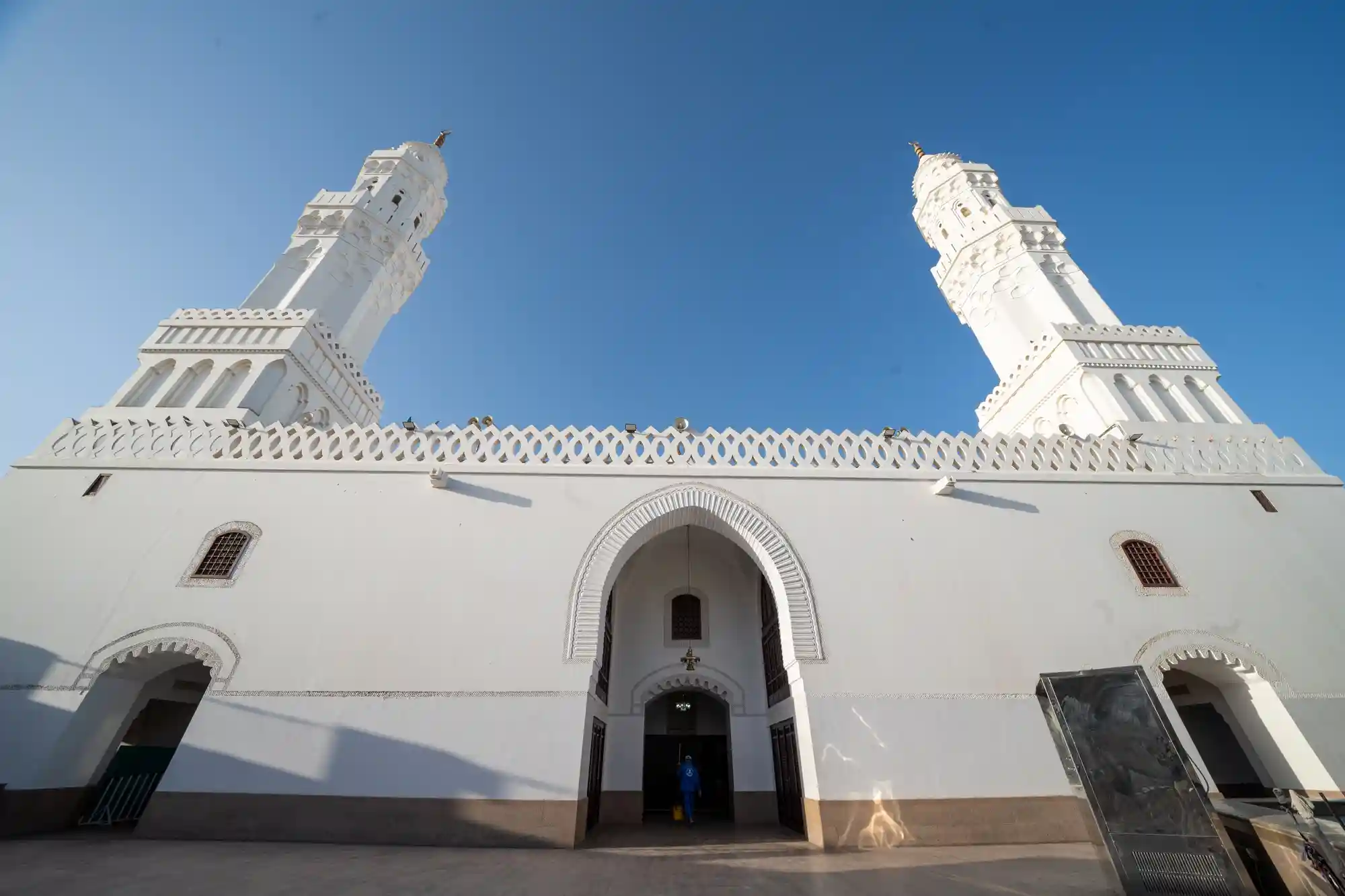


 Available
Available
 Internal + External
Internal + External
 Prayers are performed in the mosque
Prayers are performed in the mosque

